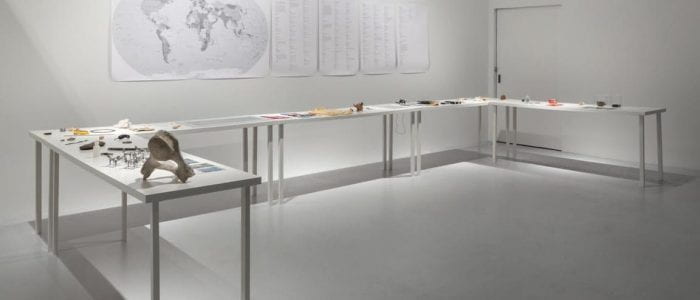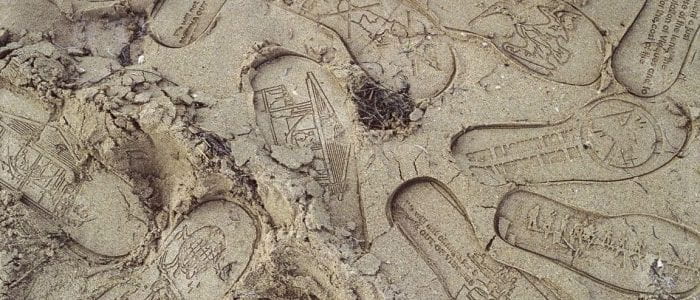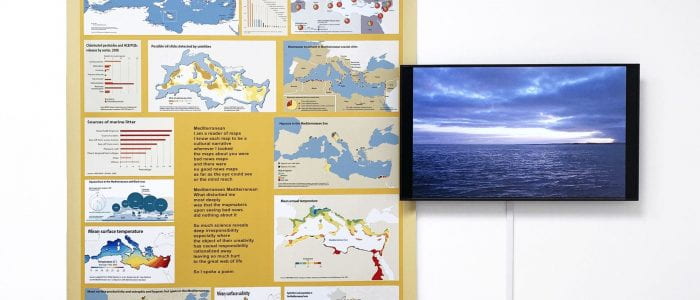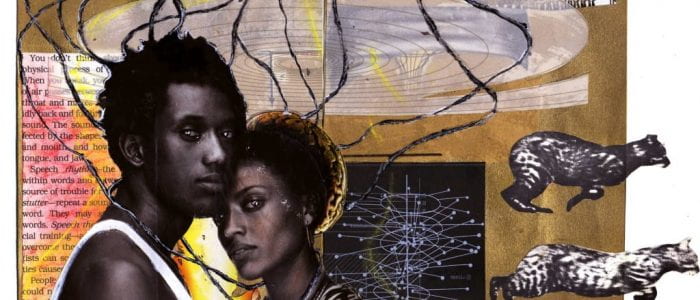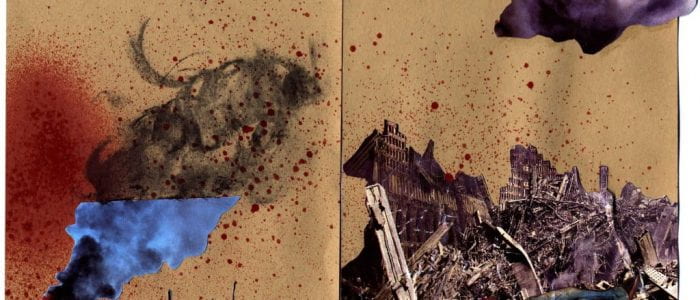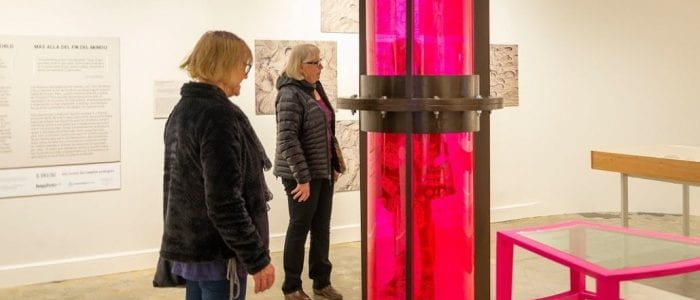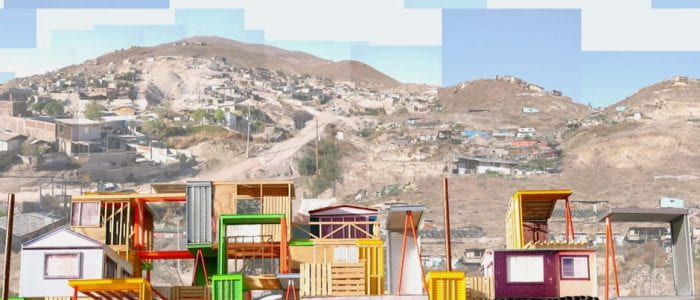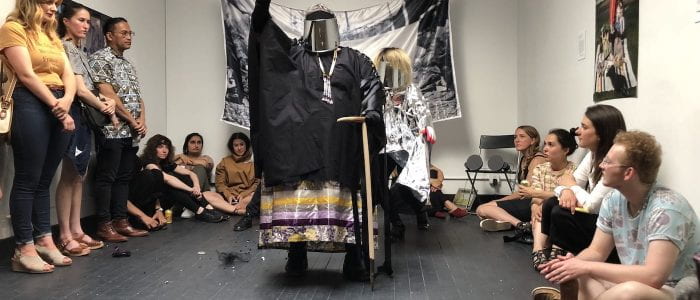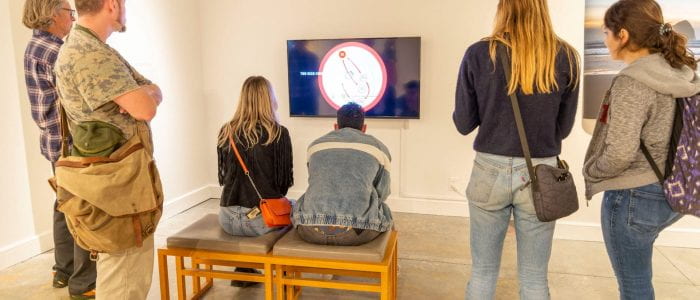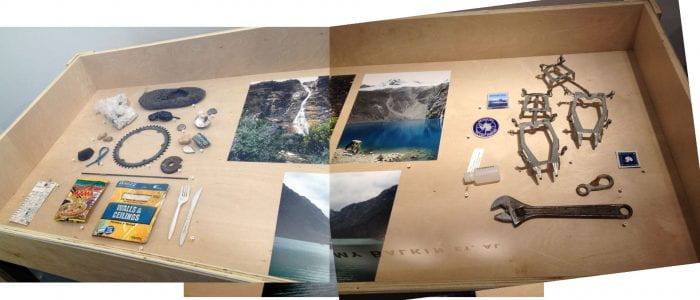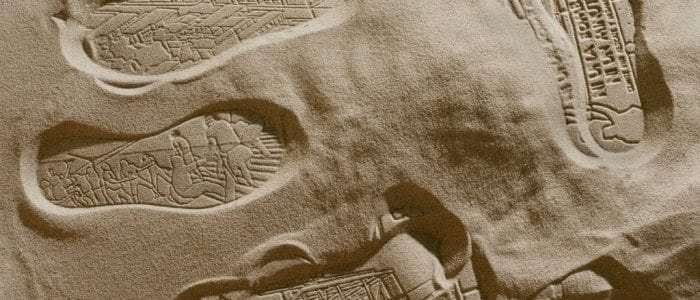Beyond the World’s End
March 6th, 2020 – c. 2021
Museum of Art & History (MAH), Santa Cruz
What does a future filled with social justice and environmentally friendly practices look like?
Apocalyptic stories are all around us. Climate crises and ongoing acts of social injustice haunt our vision of the future. But is the disaster ahead of us or behind us? For many people around the world, the apocalypse isn’t new. Colonialism, displacement, and genocide have already impacted many communities, forcing them to consider strategies for survival.
Guest curated by T.J Demos, this exhibition features art and ideas from and about the end of the world. These stories reflect the injustices that bring us to our current moment, and ask us to consider options for how to proceed. From queer indigenous hauntings and Afrofuturist montages, to a proposal for a Cross-Border Commons and a people’s archive of sinking and melting. These artworks are an invitation to be present with our past, and offer resources for what’s to come. They ask you to visualize, struggle against and overcome the social and environmental injustices we face. Apocalypse isn’t the end, it’s just the reveal.
Artists: Amy Balkin; Laurie Palmer; Teddy Cruz + Fonna Forman; Allora & Calzadilla; Future Farmers; Super Futures Haunt Qollective; Krista Franklin; Helen and Newton Harrison; Rasquache Collective
“Your teachers are all around you. All that you perceive,
all that you experience, all that is given to you or taken from you,
all that you love or hate, need or fear will teach you – If you will learn.”
– Octavia Butler
Rasquache Collective: BordersBordados: A Rasquache Time Machine
The Rasquache Collective believes in making do as a strategy for survival. Drawing on the Chicanx concept of “rasquache,” a term of Mesoamerican origin that means re-usefulness, they’ve created a time machine. Made with recycled materials, Rasquache brings together traditional kite-making and embroidery practices. Adorned with commitments and prayers, these kites offer a means for trans-border communication, also placing present and future in contact. The call and response between the kites and their tails invite you to consider creative means for cultural and community survival and collective thriving.
Teddy Cruz & Fonna Forman: The Cross-Border Environmental Commons
This 7-minute video documents Cruz and Forman’s long term project focusing on the contested area between San Diego, California, and Tijuana, Mexico. In addition to being the most trafficked international checkpoint in the world and the primary migration route from Latin America into the United States, this area is also the site of the shared ecosystem of the Tijuana River estuary. Looking at the land between these two cities, separated by an arbitrary geopolitical border, this video looks at an idea for a future borderless area that benefits both cities.
Super Futures Haunt Qollective (SFHQ)
SFHQ is a queer indigenous feminist performance group. This installation features an audio piece that imagines a conversation between Chief Seattle’s daughter, Kikisoblu (aka Princess Angeline, 1820-1896), Fanny Ball, a Modoc woman and daughter of Captain Jack (Kientpaush, 1837-73) and an ancestor of Lady HOW (one of SFHQ’s avatars, and shorthand for Haunting or Whatever). The conversation takes place in an imaginative realm that SHFQ calls the Specularity. In this realm of the not yet (but may yet be) the three characters meet and exchange gifts.
Amy Balkin: People’s Archive of Sinking and Melting
Balkin’s archive is a growing collection of items from places experiencing current and near-future threats of disappearance due to the physical, political, and economic impacts of climate change. (including glacial melting, sea-level rise, coastal erosion, and desertification). Together these objects form a collection of community-gathered evidence, a public record of present or anticipated loss.
- Browse the Full Archive
- Explore personal accounts of “What Will Have Been” in interviews from A People’s Archive.
Laurie Palmer: Public Sun /Arendt’s Table
How do we relate to one another and to the world around us? Laurie Palmer invites you to explore the architecture and energy systems that connect us. Public Sun/Arendt’s Table explores the possibility of a “common world,” a concept that German-Jewish philosopher Hannah Arendt, having survived WWII, believed we need to reconstruct. Palmer revisits Arendt’s model of the table as a social space, a space that includes both the environment and more-than-human world. Using a solar pipeline as a centerpiece, the artist sets the table for a public conversation about sustainable futures. Here you can connect around sunlight’s renewable energy and challenge the dangerous practices of fracking and oil drilling that threaten our world (including in California).
Allora & Calzadilla: Land Mark (Foot Prints)
Land Mark (Foot Prints) documents a performance and civil disobedience campaign organized by Allora and Calzadilla from 2001 to 2002. Alongside a group of activists, the artists wore specialized shoes and trespassed onto a United States Navy bombing range on a beach in Vieques, Puerto Rico. The soles of the shoes were embossed with words and images that addressed the activists’ thoughts on the former occupation of Vieques by the United States Navy. With the near-future threat of oil drilling off the California coast, the piece offers examples of community activism that have stopped governments and militaries elsewhere.
Krista Franklin: SEED (The Book of Eve) for Octavia E. Butler
Franklin’s work combines poems, popular culture, and the dynamic histories of the African Diaspora. Using collage, installation, poetry, letterpress, and performance she chisels away at the narratives historically inscribed on women and people of color. She forges imaginative spaces for radical possibilities and visions. Her books are inspired by the novels of pioneer sci-fi author Octavia E. Butler.
Newton Harrison: Apologia Mediterraneo and Bad News Map
How do you visualize a dying sea? Apologia Mediterraneo and Bad News Map chart the industry and pollution of coastal areas surrounding the Mediterranean Sea. Harrison invites you to consider the environmental destruction of modern capitalism and its industrial effects on our ecosystem. By extension, the piece also implies parallels to the Pacific Ocean in the era of climate breakdown, marine industry, and natural resource extraction. Will the sea be another casualty of modernity? If the oceans and humanity survive, what will they look like? How might we move beyond the destructive world of capitalism?
Exhibition Discussion and Q&A
On Friday, May 22nd 2020, Beyond the World’s End exhibiting artists Laurie Palmer, Amy Balkin, Krista Franklin, Newton Harrison, Super Futures Haunt Qollective, and the Rasquache Collective gathered on Zoom for a group discussion and Q&A.
The conversation was facilitated by guest curator TJ Demos from UCSC’s Center for Creative Ecologies and the MAH’s Exhibition Catalyst, Whitney Ford-Terry.
